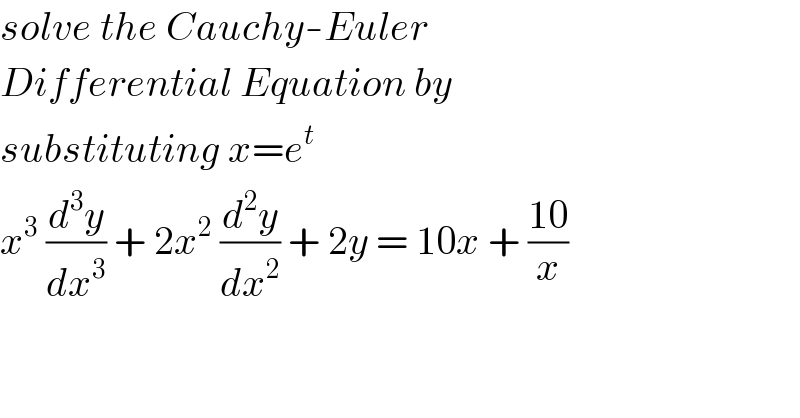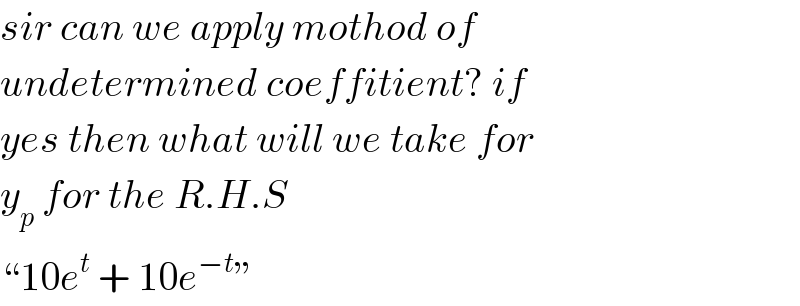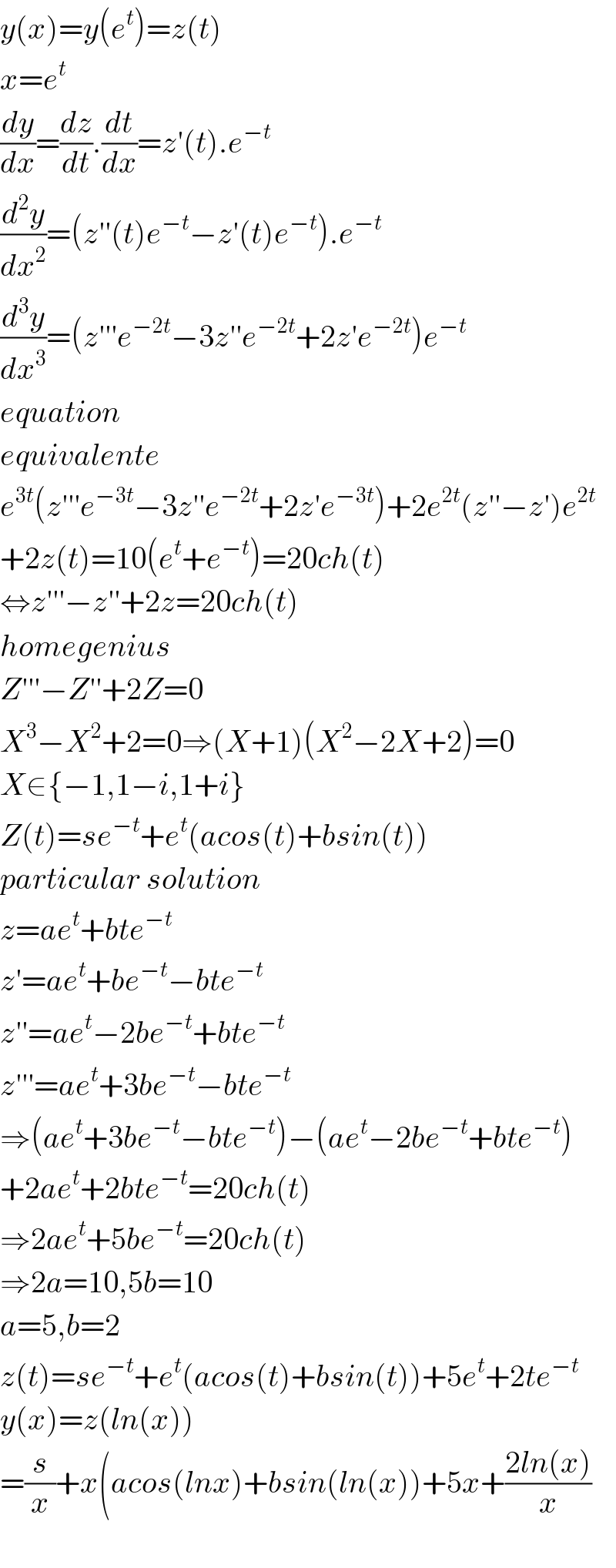
Question and Answers Forum
Previous in Differential Equation Next in Differential Equation
Question Number 116105 by ShakaLaka last updated on 30/Sep/20

Answered by TANMAY PANACEA last updated on 01/Oct/20
![x=e^t →(dx/dt)=e^t (dy/dx)=(dy/dt)×(dt/dx)=(dy/dt)×(1/e^t )→e^t (dy/dx)=(dy/dt)→x(dy/dx)=(dy/dt)← (d/dx)(x(dy/dx))=(d/dt)((dy/dt))×(dt/dx) (x(d^2 y/dx^2 )+(dy/dx))×(dx/dt)=(d^2 y/dt^2 ) x(x(d^2 y/dx^2 )+(dy/dx))=(d^2 y/dt^2 ) x^2 (d^2 y/dx^2 )=(d^2 y/dt^2 )−(dy/dt)← (d/dx)(x^2 (d^2 y/dx^2 ))=(d/dt)((d^2 y/dt^2 )−(dy/dt))×(dt/dx) (x^2 (d^3 y/dx^3 )+2x.(d^2 y/dx^2 ))×(dx/dt)=(d^3 y/dt^3 )−(d^2 y/dt^2 ) x^3 (d^3 y/dx^3 )+2x^2 (d^2 y/dx^2 )=(d^3 y/dt^3 )−(d^2 y/dt^2 ) ★ so (d^3 y/dt^3 )−(d^2 y/dt^2 )+2y=10e^t +10e^(−t) now to be solved C.F m^3 −m^2 +2=0 =m^3 +m^2 −2m^2 −2m+2m+2 =m^2 (m+1) −2m (m+1) +2 (m+1) =(m+1)(m^2 −2m+2) m+1=0 m=−1 m^2 −2m+2=0 m=((2±(√(4−8)))/2)=((2±2i)/2)=1±i so m=−1,1±i C.F y=C_1 e^(−t) +C_2 e^((1+i)t) +C_3 e^((1−i)t) P.I correction pls(in black ) y=((10e^t )/(D^3 −D^2 +2))+((10e^(−t) )/(D^3 −D^2 +2)) [D=(d/dt)] (y/(10))=(e^t /(1−1+2))+(e^(−t) /((D+1)(D^2 −2D+2))) =(e^t /2)+(e^(−t) /((D−1+1){(−1)^2 −2(−1)+2})) =(e^t /2)+(e^(−t) /5)×(1/D) =(e^t /2)+(e^(−t) /5)×t y=C.F+P.I y=C_1 e^(−t) +C_2 e^((1+i)t) +C_3 e^((1−i)t) +[(e^t /2)+(e^(−t) /5)×t]×10 =C_1 x^(−1) +C_2 x^(1+i) +C_3 x^(1−i) +((5x)/1)+((2x^(−1) )/)×lnx](Q116151.png)
Commented by ShakaLaka last updated on 01/Oct/20

Commented by ShakaLaka last updated on 01/Oct/20

Commented by TANMAY PANACEA last updated on 01/Oct/20

Commented by ShakaLaka last updated on 04/Oct/20

Answered by mindispower last updated on 01/Oct/20

